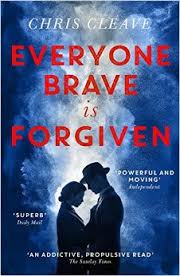In 2017 I managed to read 67 books which is thirteen down on my record breaking score last year but exactly the same number as I read in 2015. Everything I’ve read has been reviewed on this site and this year I’ve awarded 10 books the maximum five stars, 31 four stars and 26 three stars, which seems to be to be a good spread. I’ve not read anything which disappointed me enough to get a two star or one star read. I’ve read a lot more books as they are published or soon after and looking at my Top 10 it is the first year ever where all the books have either been published in 2016 (with the paperback appearing this year), 2017 and in one not-yet-published case 2018. I think that shows how good writing is at the moment. I’ve not narrowed the list down to only those which appeared this year. If I read it this year, then it’s eligible. (The earliest dated book I read this year was 1931 and Margery Allingham’s “Police At The Funeral” but she hasn’t made the list).
What I haven’t done this year at all is re-read any books (I used to re-read about 10 books a year). With publishers sending me books and with Netgalley pressures the re-reads have been pushed out, which is a shame as I love re-reading favourites and this is something I’ll need to rebalance in 2018. Choosing the books for my Top 10 has actually been easier this year because of those 10 five star reads, so all I needed to do was allocate positions for my annual review of my year in books . Anything that doesn’t make the top 10 gets culled from the bookshelves or off the Kindle, which means this year I’m losing a lot of very good books (but you can’t keep them all, I know I’ve tried in the past!)
Although I’ve read books before by two authors on my Top 10 list for all of them it is their first appearance on the list, so as far as I am concerned, these are likely to be the authors’ best books. Those also a couple of debut novelists there. The books are all fiction for the second year running and last year I had a fifty-fifty gender split this year the women have the edge with a 60/40 domination. All of the titles have been reviewed on this site- click on the titles to link to the full review.
10. Exposure- Helen Dunmore ( Windmill 2016) (Read and reviewed in January)
 This was the second of Helen Dunmore’s novels I have read but her first appearance on my Best Of The Year list. Set in 1960 in an England paranoid about the Cold War and high profile spy cases this is a thrillingly written thriller which focuses on this paranoia affecting a family when a secret file goes missing. Helen Dunmore sadly passed away in June this year, aged 64, not long after the publication of her last book “Birdcage Walk” which I am yet to read. She has left a legacy of 15 novels which demand to be discovered.
This was the second of Helen Dunmore’s novels I have read but her first appearance on my Best Of The Year list. Set in 1960 in an England paranoid about the Cold War and high profile spy cases this is a thrillingly written thriller which focuses on this paranoia affecting a family when a secret file goes missing. Helen Dunmore sadly passed away in June this year, aged 64, not long after the publication of her last book “Birdcage Walk” which I am yet to read. She has left a legacy of 15 novels which demand to be discovered.
Current Amazon sales rating: #4592 in Books
9. The Golden Age – Joan London ( Europa 2016) (Read in March, reviewed here in May)
 Australian author Joan London won awards in her homeland with her third novel and here was longlisted for the Wellcome Prize which focuses on books having an emphasis on health. This was set in a polio hospital in the early 1950’s. I described it as “a beautifully observed, quiet novel which belies its grim subject matter and becomes a life-affirming testament to hope and love.”
Australian author Joan London won awards in her homeland with her third novel and here was longlisted for the Wellcome Prize which focuses on books having an emphasis on health. This was set in a polio hospital in the early 1950’s. I described it as “a beautifully observed, quiet novel which belies its grim subject matter and becomes a life-affirming testament to hope and love.”
Current Amazon sales rating: 202,593 in Books.
8. Small Great Things – Jodi Picoult (Hodder & Stoughton 2016) (Read and reviewed in January)

The first of this American author’s 23 novels I have read. Her fans have told me it’s not quite like her other books but there seems to be a general consensus that this is her best. Picoult is a superb storyteller and I thought this “feels relevant, up to the minute and especially with the America their electorate has recently chosen for them, totally convincing. There are so many layers to the conversations that readers could have about this book. I cannot imagine a more ideal reading group book has been published in the last few years.”
Current Amazon sales rating: 136 in Books (probably the biggest commercial hit on my list- this was a big seller when it arrived in hardback and then again in paperback).
7. All The Wicked Girls – Chris Whitaker (Zaffre 2017) (Read in June, reviewed in July)

Chris Whitaker is great and you should all be buying his books. He just missed out on my Top 10 last year with his debut “Tall Oaks” and when his latest American set crime novel arrived I was convinced he would be topping best-seller lists. He impressed me here with “how authentic the author’s creation of small town America feels, in terms of speech, the environment, their cultural references and lives. The prejudices and obsessions of a small community is so effectively conveyed and I found the whole thing totally involving.” Chris is a great friend to us bloggers. I have interviewed him twice and he is the only author this year to make a comment on my review. I have been told by other bloggers how enthusiastic he is about us all when appearing at book talks. Oh, and his comment to me, just in case you haven’t seen it : “I love you, Phil. (I worry I don’t tell you that enough)”. It wasn’t his flattery I succumbed to but the quality of his novel!The best crime novel I read this year.
Current Amazon sales rating: 61,735 in Books (it’s great commercial fiction which should be in Amazon’s best sellers).
6. Home Fire – Kamila Shamsie (Bloomsbury Circus 2017) (Read and reviewed in September)

Honestly, it is unlikely that I would have read Kamila Shamsie’s modern retelling of the Antigone myth had it not been longlisted for the Man Booker prize. I was amazed it did not make the shortlist as I ask everyone who returns a library book copy whether they have enjoyed it and it universally gets the thumbs up. The author, in this, her seventh novel has recast the ancient Greek characters as a Muslim family from Wembley. I said of this “Shamsie is educating, entertaining and gripping her readers in a manner which explores the potential of the plot in eye-opening, thought-provoking ways. This feels like a very important novel for our times and yet has an age-old story as its framework.” A bag of M&Ms has a lot to answer for in this book.
Current Amazon sales rating: 2,197 in books
Next post – My Top 5 reads from 2017

















 This was the second of Helen Dunmore’s novels I have read but her first appearance on my Best Of The Year list. Set in 1960 in an England paranoid about the Cold War and high profile spy cases this is a thrillingly written thriller which focuses on this paranoia affecting a family when a secret file goes missing. Helen Dunmore sadly passed away in June this year, aged 64, not long after the publication of her last book “Birdcage Walk” which I am yet to read. She has left a legacy of 15 novels which demand to be discovered.
This was the second of Helen Dunmore’s novels I have read but her first appearance on my Best Of The Year list. Set in 1960 in an England paranoid about the Cold War and high profile spy cases this is a thrillingly written thriller which focuses on this paranoia affecting a family when a secret file goes missing. Helen Dunmore sadly passed away in June this year, aged 64, not long after the publication of her last book “Birdcage Walk” which I am yet to read. She has left a legacy of 15 novels which demand to be discovered. Australian author Joan London won awards in her homeland with her third novel and here was longlisted for the Wellcome Prize which focuses on books having an emphasis on health. This was set in a polio hospital in the early 1950’s. I described it as “a beautifully observed, quiet novel which belies its grim subject matter and becomes a life-affirming testament to hope and love.”
Australian author Joan London won awards in her homeland with her third novel and here was longlisted for the Wellcome Prize which focuses on books having an emphasis on health. This was set in a polio hospital in the early 1950’s. I described it as “a beautifully observed, quiet novel which belies its grim subject matter and becomes a life-affirming testament to hope and love.”





